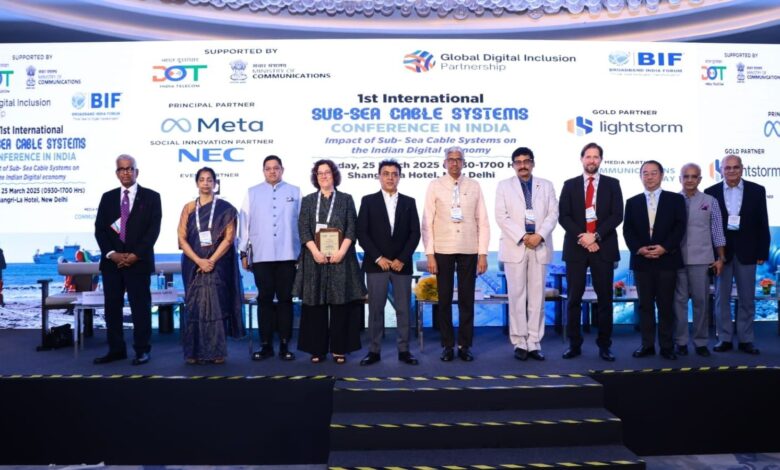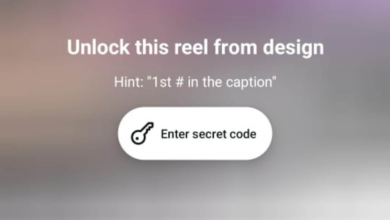TRAI Subsea Cable Expansion: TRAI chief calls for 10x expansion of India’s subsea cable infra to meet surging data demand

Highlighting that India’s exing submarine or subsea cable infrastructure falls short of its digital ambitions, Anil Kumar Lahoti, the chairman of the Telecom Regulatory Authority of India (TRAI), said that the country “has to do much more” to strengthen its subsea cable network.Lahoti reiterated that India hosts only 1 per cent of the world’s subsea cable landing stations, in contrast to smaller countries such as Singapore which has 26 subsea cables landed across three landing sites. He emphasised the need to improve and expand India’s cable systems taking a “strategic, security conscious and innovation driven approach.”
The head of the telecom regulatory body made these remarks at India’s first-ever International Subsea Cable Systems Conference hosted Broadband India Forum (BIF) in New Delhi on Tuesday, March 25.
Story continues below this ad
The other speakers at the inaugural session of the conference included key industry stakeholders such as Robert Ravi, CMD, BSNL; Scott Cowling, Director, Network Investments, Meta; Rahul Vatts, Chief Regulatory Officer, Bharti Airtel; Amajit Gupta, Group CEO & MD, Lightstorm; and Thomas Ohta, Senior Director- Head of Submarine Sales Department, Submarine Network Division, NEC along with Sonia Jorge, Executive Director, Global Digital Inclusion Partnership (GDIP) and BIF Chairperson Aruna Sundararajan.
The event comes just weeks after three undersea cables connecting India to global telecom networks were reportedly severed, possibly due to targeted attacks, affecting 25 per cent of data traffic flowing between Asia and Europe. Indian telecom operators Bharti Airtel, Reliance Jio, and Tata Communications were reportedly forced to reroute traffic to other cable systems following the disruption.
“Recent global subsea cable disruptions highlight the need for strengthening this backbone. To safeguard our strategic and commercial interests, geographical diversity of subsea cables, and increasing CLS (cable landing stations) sites and subsea cables, are important.” the TRAI chief said.
Backbone of global digital infrastructure
Subsea cables are clusters of glass fibres that are as thin as hair, strung across the ocean floor. Using fiber-optic technology, they transmit more than 95 per cent of intercontinental traffic across the world’s oceans to seamlessly enable digital communication, video experiences, online transactions, and more.Story continues below this ad
Landing stations are where the subsea cables link up with terrestrial networks enabling Wi-Fi and mobile data. As per a 2022 TRAI report, India has about 17 subsea cables terminating at 14 dinct cable landing stations (CLS) in five cities, namely Mumbai, Chennai, Kochi, Thoothukudi, and Thiruvananthapuram.
Global Submarine Cable Map 2025. (Image credit: TeleGeography)
Despite new wireless and satellite technologies, undersea cables are considered to be the fastest, cheapest, and most efficient method of transmitting information across oceans.
“Subsea cables have a transformative impact in advancing affordable and universal meaningful connectivity. Hence, policy and regulatory barriers to subsea cable deployment, maintenance and repair must be addressed to secure equitable high quality digital access,” GDIP’s Sonia Jorge said.
Since undersea cables are viewed as global digital highways, consortiums of telecom operators and other companies would typically pool their resources and collaborate on projects to build out the infrastructure.Story continues below this ad
However, with the advent of cloud storage in the 2000s, major cloud service providers such as Google and OTT platforms like Meta began setting up their exclusive undersea cable networks. Over 50 to 60 per cent of traffic transmitted subsea cables is now traffic from OTT platforms and hyperscalers, with the rest being corporate and internet traffic, according to Lightstorm’s Amajit Gupta.
Submarine Cable Map 2025 of Singapore. (Image credit: TeleGeography)
Google has around 33 undersea cable routes, some of which are exclusively owned, as per research firm TeleGeography. Earlier this year, Meta announced an ambitious undersea cable project called Project Waterworth that will span over 50,000 kilometers and reach five major continents, including India.
Accelerating India’s digital infrastructure growth
Stating that India is poised to be one of the leading global infrastructure leaders in the coming years, Meta’s Scott Cowling said, “If you look at it on the map, Project Waterworth is really centered on India. It is a W shape and that center key of the W is in India with landing stations on both east and west coasts.”
He further said that subsea cables and terrestrial connectivity were requisites for data centre investments Meta in any country.Story continues below this ad
According to Cowling, the big tech company decides to invest in data centres based on factors such as power availability, reliable connectivity, and an attractive regulatory environment. “A data centre can be built in approximately two years. A trans-oceanic cable system takes no less than five. But, unfortunately that timeline is only lengthening due to increase in permit and licensing regulation,” Cowling added.
India’s subsea cable vulnerabilities
The 570 subsea cables that are operational globally account for more than 90 per cent of world data and 80 per cent of world trade as they move secure information about $10 trillion worth of financial transactions, as per Goldman Sachs.
Stating that the vulnerabilities of subsea cables are multifold, Lightstorm’s Amajit Gupta said, “I think most of the industry people will tell you that what’s happening in the Red Sea is a nightmare. Our internet either enters through the west or through the east and irrespective of how good the infrastructure is locally, if there’s a disruption at Red Sea, 25 per cent of India’s internet is affected. If that’s not bad enough, the ability to monitor and repair the subsea cables fast enough is also beyond our control.”
Cable Landing Station (CLS) site in Versova, Mumbai, Maharashtra, as per Submarine Cable Map 2025. (Image credit: TeleGeography)
In February 2025, the Coalition for Disaster Resilient Infrastructure (CDRI) released a report assessing the disaster preparedness of telecom networks in India. The report highlighted that India currently lacks indigenous vessels to repair faults in subsea cables, which means that it depends on foreign vessels for these repairs. “This reliance leads to significant delays in addressing faults,” it read, adding that coastal regions with CLS sites face elevated risks.Story continues below this ad
“Practically speaking, 95 per cent of India’s subsea cables today terminates at a small 6 kilometre patch in a place called Versova in Mumbai. It’s the most expensive real estate in India and has its own vulnerabilities,” Gupta said.
He further called on the Indian government to categorise subsea cables as critical telecom infrastructure as per the Telecommunications (Critical Telecom Infrastructure) Rules, 2024.
Regulatory restrictions, other bottlenecks
Bharti Airtel’s Rahul Vatts noted that despite TRAI’s strong recommendations after a good stakeholder consultation, progress has been minimal.
“Fishing trawlers break our cables all the time and that’s the biggest pain point for us. To get a repair ship to India, I need to get an approval which takes me six months, since it requires persons from the department of telecom to be present on the ship when the maintenance is going on,” Vatts said, adding that there was a further lack of regulatory clarity on the custom duty front as well as a flag change requirement for repair ships.Story continues below this ad
“We need to have an indigenous cable repair vessel, and we need to set up our own repair and cable installation expertise in-house in India. I also think we need to have a separate cable corridor as the damage [to subsea cables] happens largely because the routes used for laying the cables are similar to a lot of fishing routes,” he added.
In addition, Vatts urged the Indian government to declare subsea cables as national strategic assets since it would give industry players a tax exemption on cable imports. “The right kind of cable is necessary for us to be able to build on to our capacity,” he said.
Airtel has reportedly backed 11 different cable systems, and has inked long-term capacity agreements for 34 other subsea cable projects with four more projects currently under development. Meanwhile, Reliance Jio also has ownership in two subsea cable projects that are yet to be deployed.





